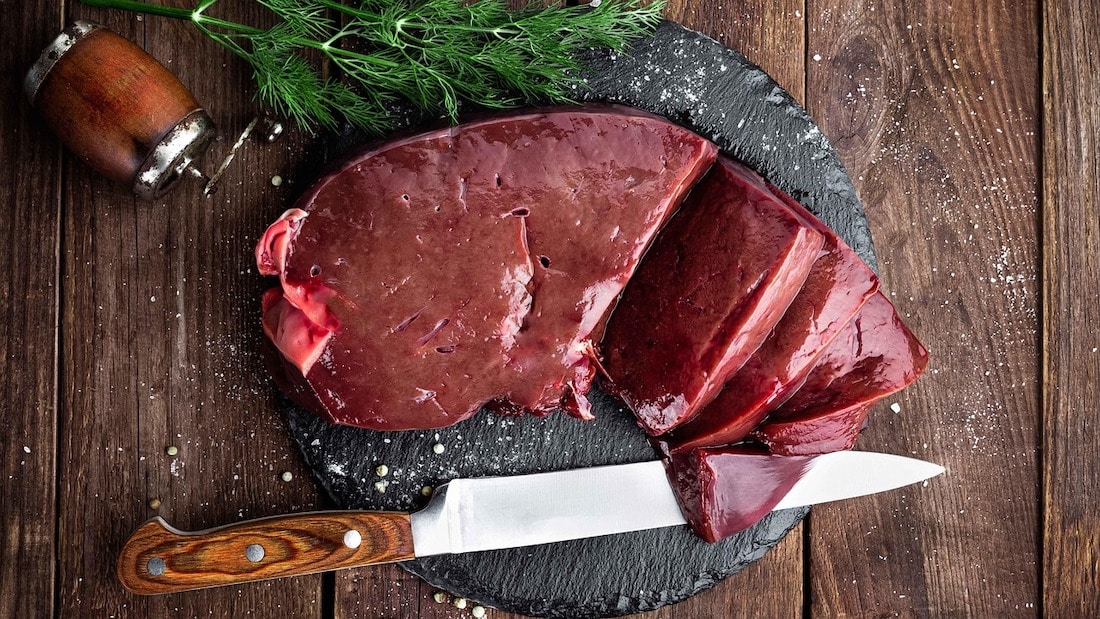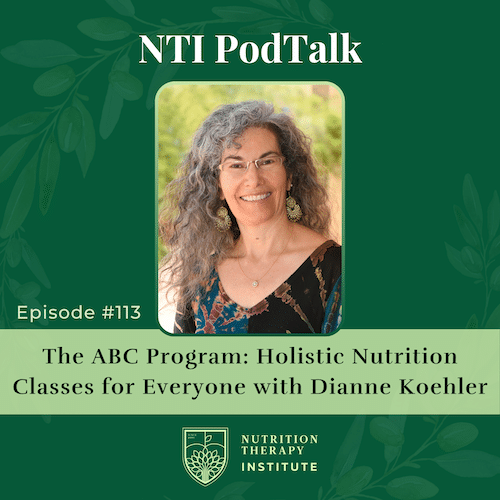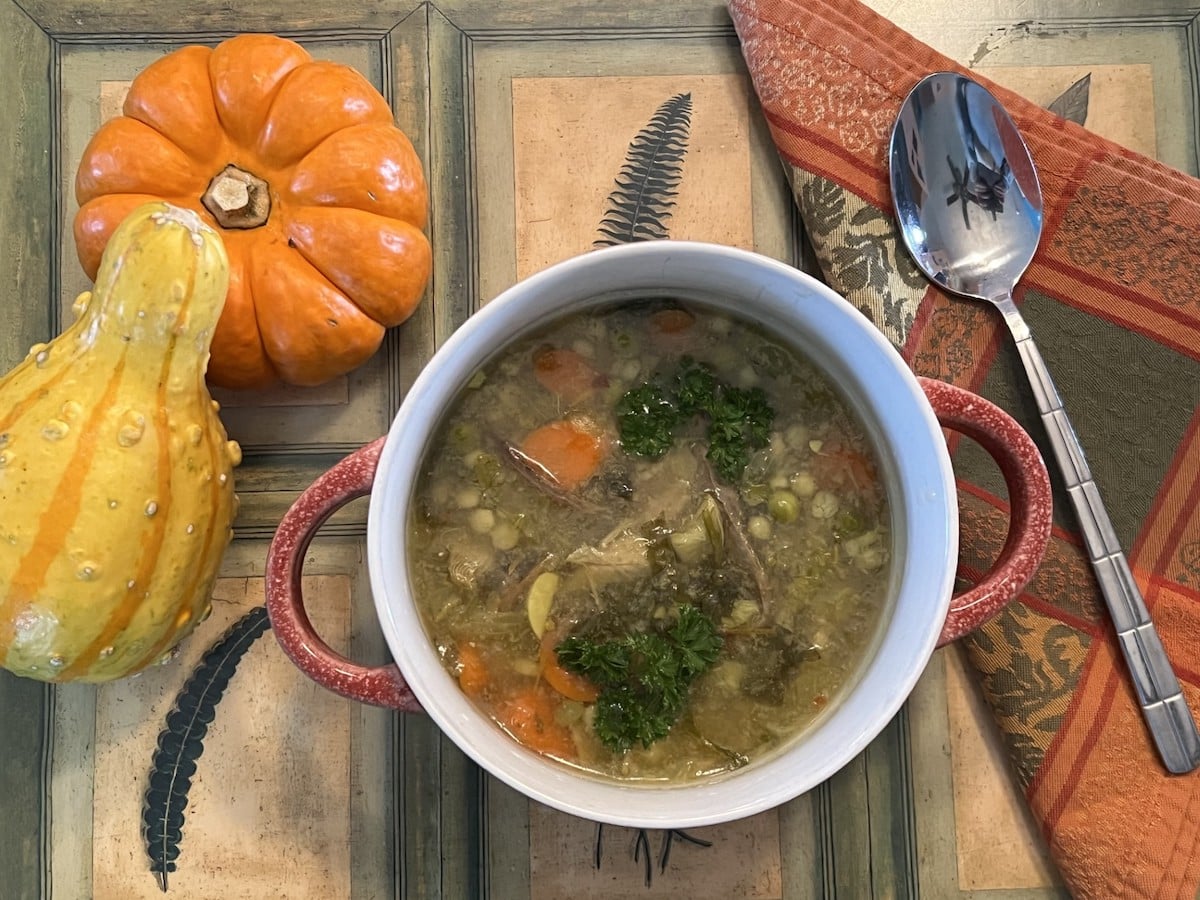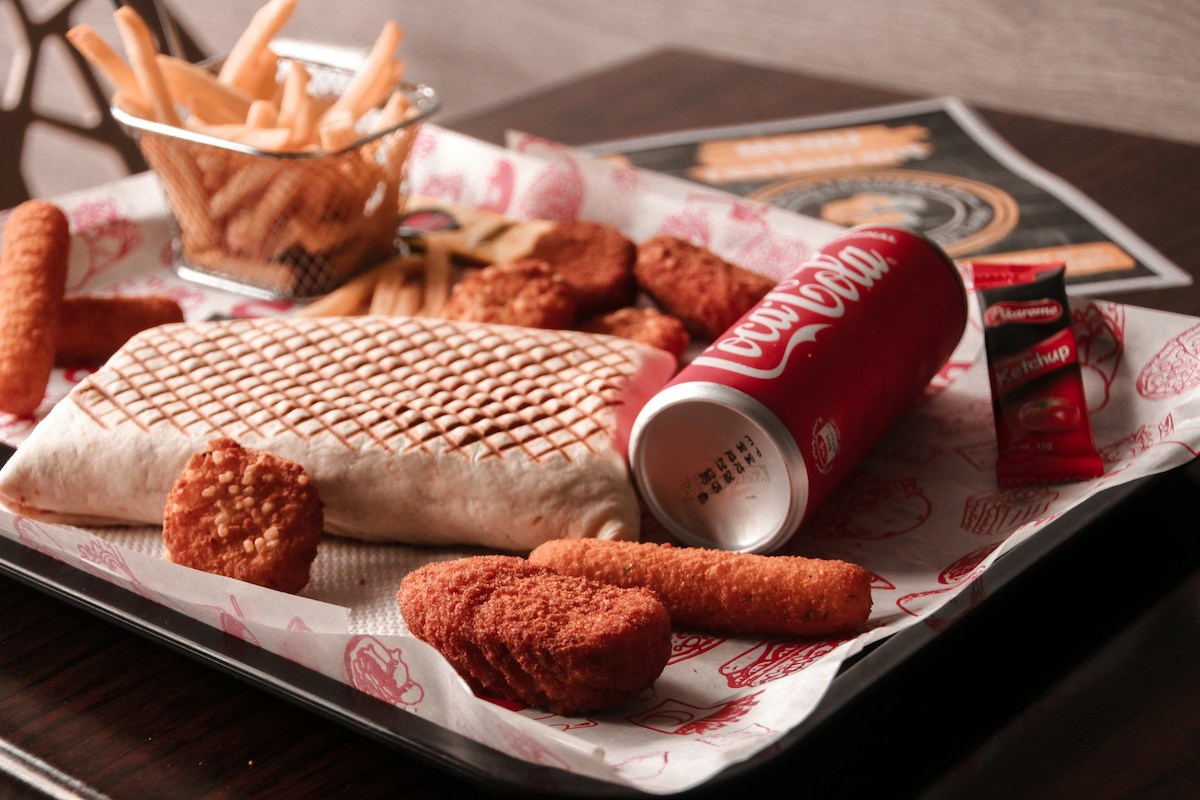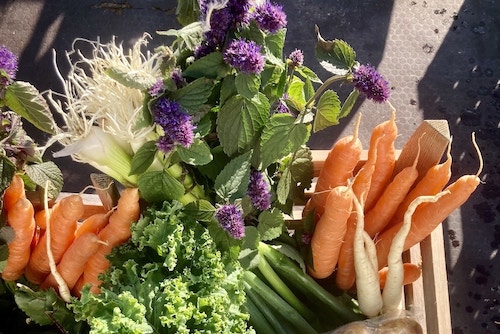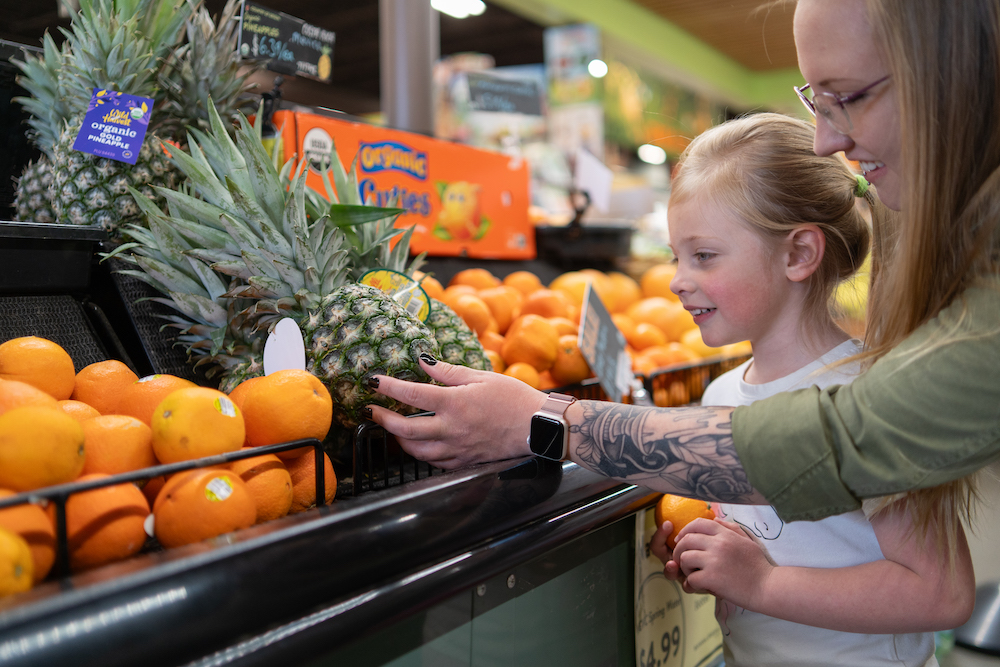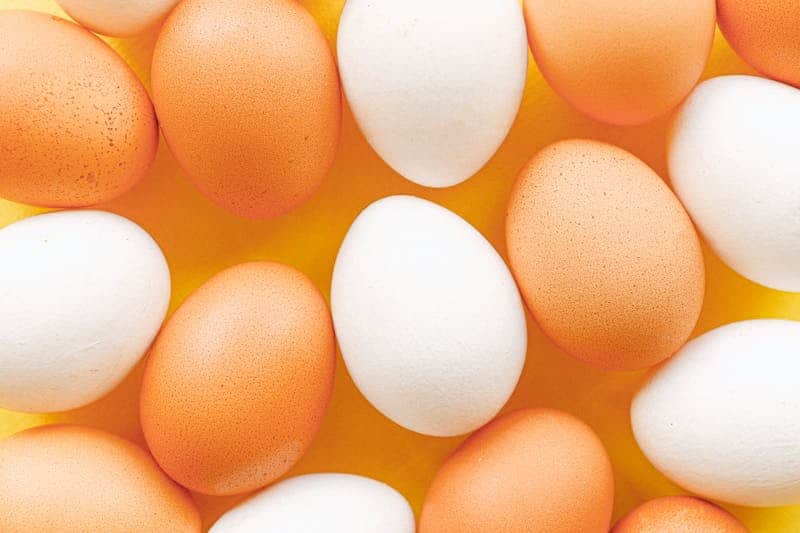
Share this post!
Egg prices got you down? Try these replacements instead!
Eggs are unique, as they are both good emulsifiers and effective at trapping air, which helps baked goods to rise; however, in many recipes, eggs can be swapped out for other, more budget-friendly ingredients that generate similar results.
There are a number of plant-based alternatives that can be used in place of eggs that are vegan-friendly, helpful for folks with egg allergies (eggs are one of the “Big 9” most common food allergens), and easier on your wallet.
Whether it’s cost, personal preference, or dietary restrictions that’ve got you going egg-free, these top five egg substitutes will have you crackin’ in no time! (Yes, that was an egg pun.)
(Heads up: if a recipe requires more than two eggs, these replacements are less likely to be effective.)
1. Flax Seeds

First up are flax seeds, which are a popular choice for replacing eggs in many recipes. These little brown seeds pack a nutritional punch, as they are high in anti-inflammatory omega-3 fats, soluble fiber, and antioxidants. Flax seeds are excellent binders, add moisture, and create a slightly chewy texture. They also have a mild nutty flavor, which can be complementary in many baked goods. However, flax seeds don’t rise, so they wouldn’t pair well with recipes that call for a lighter, fluffier consistency (you’ll want to make sure you have another leavening agent for this).
To make a “flax egg,” you’ll need to combine ground flax seed (aka flaxseed meal) with water and let the mixture sit until it thickens to create an egg-like texture (see “How to Use” below).
It’s best to grind these seeds yourself using a small blender or spice grinder; the high fat content in flax causes the pre-ground meal to go rancid quickly, which can cause oxidative stress and inflammation in the body.
How to Use:
- 1 tbsp ground flax seeds + 3 tbsp water = 1 egg
- Let sit for 5 to 10 minutes to thicken
Best in: brownies, muffins, cookies, loaf cakes
2. Chia Seeds
Up next are chia seeds, which are also nutritional powerhouses! Like flax, these tiny black seeds are high in omega-3 fats and soluble fiber; however, they’re also a plant-based source of complete protein, meaning they contain all nine essential amino acids (just 2 tablespoons contain 4 grams of protein!).
Both flax and chia seeds work similarly in recipes; they’re good binders, add lots of moisture, and create a chewier, denser texture. Similarly, chia is not a rising agent, and wouldn’t work well in lighter recipes.
Unlike flax seeds, you don’t need to grind chia seeds to make a “chia egg.” This is a “just add water” situation, which makes them even easier to use than flax seeds! Chia seeds absorb water quickly and create a gelatinous texture that resembles a beaten egg.
How to Use:
- 1 tbsp chia seeds + 4 tbsp water = 1 egg
- Let sit for 5 to 10 minutes to thicken
Best in: brownies, muffins, cookies, loaf cakes
3. Aquafaba
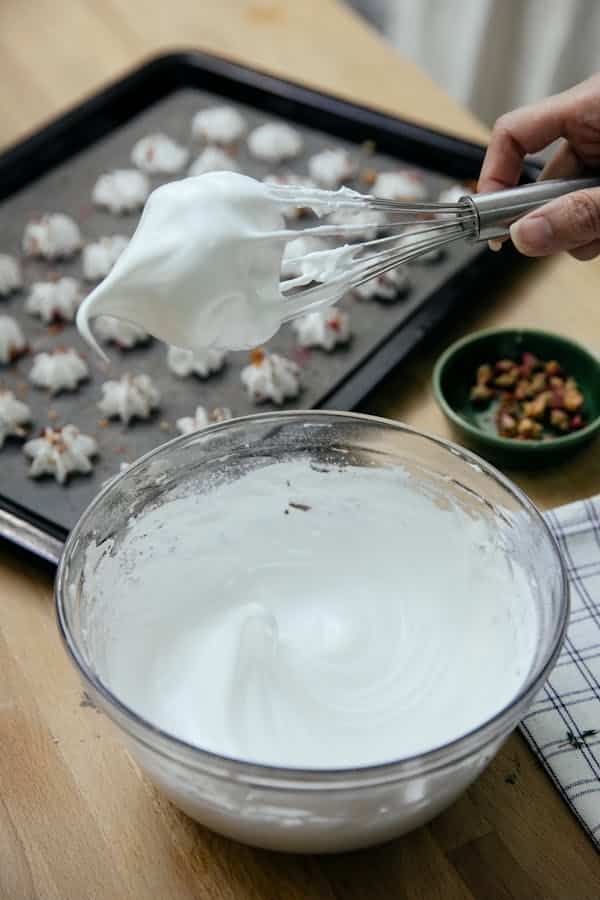
Ok, so if you’re wondering what the heck is aquafaba, you’re not alone. If you haven’t heard of this egg substitute before, it’s the liquid from a can of chickpeas (stay with me). This “chickpea brine” made a splash on the plant-based food scene not too long ago because it was discovered that whipping this liquid created a similar consistency to meringue. Believe it or not, you can actually use aquafaba as a comparable substitute for egg whites.
Although aquafaba isn’t nearly as nutritious as the other egg substitutes listed here, it does have one major advantage: it traps air and helps create rise. Aquafaba can be whipped into soft or stiff peaks, making it an excellent substitute for any recipe that calls for meringue (aka whipped egg whites).
This liquid is also a great binder and works beautifully in recipes that call for a light, fluffy texture.
How to Use:
As a whole egg substitute
- 3 tablespoons aquafaba = 1 whole egg
- Whisk the aquafaba for up to 60 seconds until it’s foamy (similar to beating an egg)
- Strain liquid from 1 15-ounce can of chickpeas
- Add 1/8 tsp cream of tartar
- Whip with stand mixer or electric hand mixer (3 to 6 min for soft peaks; 6 to 10 min for stiff peaks)
Best in: meringues, macaroons, pavlova, light frostings (whipped); waffles, pancakes, slab cakes, cupcakes (unwhipped)
4. Mashed Banana
Well known for their high potassium content, bananas are also a good source of soluble fiber, vitamin C and B6, magnesium, and manganese. This kitchen staple is also a favourite in the baking world (hello, banana bread!) and happens to be a great egg substitute as well.
Banana is an effective binder and adds a ton of moisture and delicious flavor. Ripe and overripe banana can be quite sweet, which means you can cut back on your sugar too! Banana pairs well with chocolate, nuts, caramel, and creamy flavors (custard, yogurt, coconut etc.) and can add a denseness to baked goods that is desirable for certain recipes (and not so much for others). Like flax and chia, bananas are not a rising agent.
How to Use:
- ½ ripe/overripe banana mashed = 1 egg
Best in: loaf cakes, pancakes, muffins
5. Applesauce
Last but not least, we have humble, yet mighty applesauce. Not to be underestimated, apples are high in antioxidants, including quercetin, which is super anti-inflammatory and anti-histamine (win-win!). Apples are also a good source of soluble fiber and, though naturally sweet, are low on the glycemic index (meaning they won’t drastically spike your blood sugar).
As an egg substitute, applesauce works similarly to mashed banana. It’s a good binder and imparts great moisture and natural sweetness. However, applesauce does not have as strong a flavor, which makes it a good alternative to banana.
Applesauce works well in denser baked goods that require a lot of moisture (and not a lot of rise). It pairs well with warming spices (cinnamon, ginger, nutmeg etc.), maple syrup, caramel, vanilla, dried fruit, and nuts.
Make sure to use unsweetened applesauce to avoid adding extra sugar. And remember: most of the nutrients are in the apple peel, so making your own applesauce with the skins on will help you retain those beneficial properties!
How to Use:
- ¼ cup unsweetened applesauce = 1 egg
Best in: loaf cakes, muffins, denser cakes (think: carrot cake)
Key Takeaways
- Flax and chia seeds work similarly: good binders, add moisture, and work well in denser bakes
- Aquafaba is the liquid from a can of chickpeas: can be used as a replacement for whipped egg whites and is good in lighter bakes
- Mashed banana and applesauce work similarly: good binders, add moisture and natural sweetness, work well in denser bakes
Recipes & Resources
Recipes
Related Articles
- Is the Fear of Eggs Still a Thing?!?
- Plant-Based Meats: Potential or Problematic?
- A Definitive Guide for Plant-Based Milk Alternatives
Curious how nutrition pros know all the best swaps?
At Nutrition Therapy Institute, students in the Nutrition Therapist Master Certification (NTMC) program learn how to make smart, health-supportive substitutions like these—and why they work. If you geek out over food science, love digging into ingredients, or want to turn your passion for nutrition into a meaningful career, NTI is the place for you.
👉 Learn more about the NTMC program today and take the first step toward becoming a nutrition expert.
Explore the Program »
About the author: Jennifer Gartner is a certified Nutrition Therapist Master and specializes in nutritional endocrinology. She is a graduate of NTI’s Nutrition Therapist Master Program and has dedicated her career to helping people make happy hormones.
Medical Disclaimer
This blog provides information for educational purposes only and is not a substitute for professional medical advice, diagnosis, or treatment by a qualified medical professional. The information provided should not be used to diagnose or treat a medical condition. Consult your doctor or other qualified medical professional regarding a medical condition or treatment.
Images: Photo by Anna Shvet on Pexels; Photo by Marek Kupiec on Pexels; Photo by Kampus Production on Pexels
Share this post!


